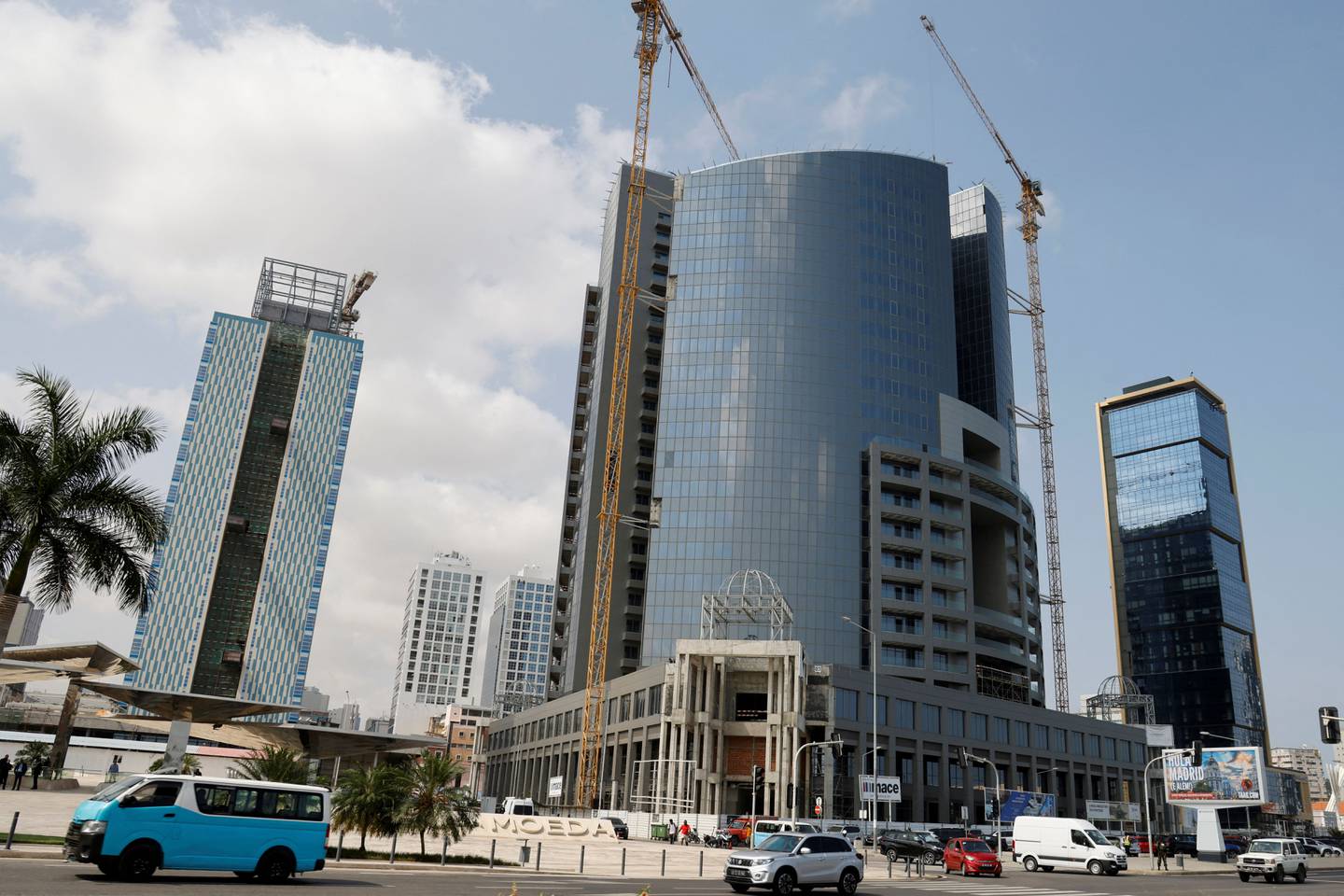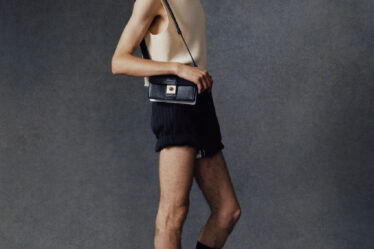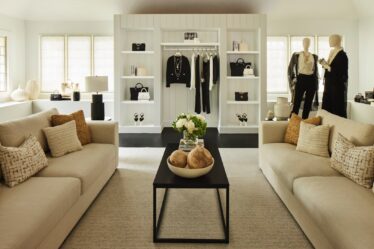
Angola’s bustling capital city of eight million people never sleeps. Parties in Luanda are held throughout the week and often have unspoken dress codes. Among the upper classes, repeating an outfit is more than just a faux pas — it’s a taboo.
“If I buy an outfit, it is my utmost wish not to see it worn by another person,” said Arminda Kevin, a former model, who now runs a modelling agency in Luanda called Agência Princesa. “That [mindset] could be one of the reasons why the luxury segment is booming [here].”
Angola ranks fifth among Africa’s 54 countries in terms of overall private wealth, behind South Africa, Egypt, Nigeria, Morocco, Kenya, Ghana and Tanzania, according to a 2022 wealth report by advisory Henley & Partners. Around 2,400 high-net-worth individuals (US dollar millionaires) reside in the country but, by most accounts, those really driving the luxury market are a secretive demographic of unknown size — those approaching billionaire status.
The Angolan Civil War, which lasted between 1975 and 2002, eroded the purchasing power of most of its citizens but demand for high fashion brands boomed after it ended. “Thanks to peace and prosperity, we’re beginning to exercise our passion for upscale fashion [again],” said Jilson Ndefe, a Luanda-based historian.
The oil-, gas- and diamond-rich nation has enjoyed two decades of post-war stability and economic growth. In a country where the gap between the rich and poor is stark, the elites have accrued fortunes believed to be some of the largest on the African continent. At least one high-profile Angolan billionaire, Isabel dos Santos, has been the target of anti-corruption campaigns.
Fabio Mukendi, a researcher in social science at the University of Luanda, explains that garments selling for $1000 to $2500 “could be eye-popping elsewhere in the central Africa region but it’s commonplace here in Luanda” because potential buyers in that segment of the market “are more concerned with quality and uniqueness [than] price.”
Angola’s fashion market used to function as an extension of the Portuguese market as the country was under Portugal colonial rule until 1975. While business and tourism links between the two countries remained strong, wealthy Angolans traditionally did their biggest shopping hauls in Lisbon — though some ventured to other European cities.
Many government officials, business executives, wives of senior managers and other luxury consumers continue to shop in Lisbon’s Avenida da Liberdade district, but domestic spending is also on the rise, according to local observers, thanks to the emergence of local luxury multi-brand boutiques.
Behind Closed Doors
High rentals and the shortage of suitable retail infrastructure elsewhere forced many of these boutiques to concentrate in the Maianga district. One of the oldest in the city, the Ana Isabel store which sells brands like Elie Saab and Dolce & Gabbana, still stands in that upscale neighbourhood, where it has operated almost anonymously since 2003.
“There are many luxury multi-brand boutiques in the city that don’t display signposts or publish information about their offers on social media,” said Antonio Bango, art and culture journalist at state-owned Jornal de Angola.
“Initially, we used to think they do this for fiscal reasons, but [in fact it’s because] most of their clients prefer to shop discreetly due to their sensitive social status — some are politicians, government officials, contractors, etcetera. They don’t want to be seen splashing a fortune on clothes and accessories.”
“Even before the products get to the shop, clients are already informed about the timeline of the departure from the countries they are imported from, arrival in Angola and customs clearance. Orders are quickly taken and processed,” Bango explained.
MC Boutique, once reportedly managed by Oriane Queirós, mostly has a similar mode of operation but has participated in exclusive events like Angola Fashion Week. It opened on Cabral Moncada Street in Luanda in September 2011, displaying labels such as Dolce & Gabbana, Prada, Christian Dior, Armani, Ralph Lauren, Roberto Cavalli and Valentino.
The boutique receives most of its patrons by appointment and behind closed doors. Some shoppers spend up to $15,000 in a single trip, according to a regular client who spoke to BoF on the condition of anonymity.
Espaço Selecta launched its business a few years ago near Estádio dos Coqueiros (Coqueiros Stadium), providing clothing and accessories from a similar roster of global luxury brands. Márcia Nunes is reportedly the firm’s managing partner.
“This luxury outlet maintains a strong relationship with its customers,” said Hadjalmar El Vaim, a promoter of fashion events. “Customers could make a call and drop a list of their needs, which would be included in their next [international] order.”
None of the fashion multi-brand boutiques contacted by BoF responded to requests for comment.
Portuguese watches and jewellery retailer Boutique dos Relógios Plus expanded to Luanda some years ago through local partner Sincronia Angola, setting up a plush store on Rua Marechal Broz Tito. Brands such as Audemars Piguet, Breguet, Breitling, Bulgari, Cartier, Hublot, Piaget and Vacheron Constantin can be found at the Angolan branch where Patricia Barreto acts as general manager.
Hugo Boss was one of the first international luxury players to open a mono-brand outlet in Luanda. Located at the Avenida Shopping Centre in the Marro Bento neighbourhood, the Boss store is operated by a local partner called Fidalga Lda. Fidalga also has an eponymous chain of eleven stores selling international perfumes and beauty products from brands like Yves Saint Laurent and Lancome across Luanda and Benguela.
Following in the footsteps of Boss, Lacoste opened shop at the same mall and later expanded to locations of Zahara Imobiliária’s shopping mall Xyami, which has several branches across the country.
While most of the multi-brand luxury stores are located in exclusive locations with limited access for the general public, the arrival of malls like these changed the landscape.
The Shopping Mall Landscape
In May 2015, Angola’s first upmarket commercial centre, Sky Gallery, opened its doors in the Kinaxixi district of Luanda. The $80 million project was partly financed by Dubai-based Portuguese developer Interway Group.
Built over four floors, Sky Gallery boasts 40 upmarket stores that cater for locals, expats and tourists alike. Multi-brand boutiques selling brands like Zegna and Armani reportedly operate at the complex, which also includes restaurants, lounge areas, a champagne bar, beauty areas and a gourmet supermarket.
“The fact that anybody can take the lift and go to those luxury shops… is to me some kind of demystification or democracy,” said Jorge Lutonda, a Luanda-based designer, who has participated in Angola Fashion Week.
“You don’t have to be a minister’s son to visit a store [selling Gucci]. Sky Gallery is for everyone. The assumption that it’s just a handful of people with huge money that patronise the luxury fashion business in Angola is wrong.”
“There are thousands who are not rich, but who choose to buy one or more expensive piece of items although less frequently. This group is also important for the luxury fashion market here,” Lutonda added, referring to the country’s growing middle-class demographic.
But despite efforts to boost domestic shopping by making foreign brands more available, some Angolans still travel abroad to buy their designer gear.
“I still do my shopping in Lisbon, Paris and Milan. Most of the products I buy abroad are available in Luanda but are too expensive. In fact, luxury labels cost twice as much in Luanda as in Lisbon, [which compels] many Angolans to keep going abroad for shopping,” said Sara Kiala, a business executive in the petroleum sector.
Travel costs, customs duties and profiteering have been flagged as the main reasons for the stark difference in prices between goods sold in Luanda and Lisbon. “Some sellers raise their prices exorbitantly,” said Mukendi.
Bango believes that “reasonable tax packages need to be introduced as well as affordable rents [to] prevent Luanda from losing potential customers to [overseas shopping destinations and] hampering the domestic luxury market,” he added.
Another issue some foreign brands are wary of is a regulatory obligation to operate through a local partner. Brands considering entering Angola are also required to obtain their licence through a local firm.
What’s more, “some [would-be partners] launch companies [here] with little or no knowledge of fashion and then invite foreign brands to come for prospection and potential collaboration. Sometimes it ends badly,” said Alexandre Macanga, a former inspector and comptroller at the Angolan ministry of industry and commerce.
“These local partners automatically become vital shareholders and part of the company’s decision-making arm. Some are great and have collaborated with foreign brands for decades. However, we have a lot of bad eggs too.”
Amid such challenges and constraints, what is the outlook for global fashion brands and investors looking to enter or expand in Angola?
Mixed Economic Outlook
While the first phase of Angola’s economic boom appears to be over as double-digit growth has shrunk to single digits, purchasing power remains high. With GDP estimated to have grown 3.5 percent in 2023 according to the African Development Bank, consumer confidence at the higher end of the income pyramid remains high.
“Massive state investments are still ongoing across the country. Contracts are being awarded. The government is working to diversify the economy from oil. All those efforts will help create more jobs and businesses and keep the money flowing,” said Lucia Nsumbo, a reporter for Jornal de Angola.
One such example is the newly built Agostinho Neto International Airport, 41 kilometres from downtown Luanda. The $3.8 billion project is the largest of its kind built by any Chinese enterprise outside China. “Real estates, hotels, malls and other services will spring up in the vicinity,” said Nsumbo.
However, the kwanza remains unstable, and was Africa’s weakest currency against the dollar after a 21 percent plunge in June. According to the World Bank, Angola “needs to urgently invest in removing barriers to private sector investment to achieve economic diversification” beyond oil.
The political dimension of the business environment will also influence the viability of any market. Angola is ranked 116 out of 180 countries in the 2022 Transparency International corruption perceptions index, though it does represent an improvement of four spots since the previous year.
International investors will be familiar with the worrying case of Isabel dos Santos, the exiled daughter of Angola’s former president José Eduardo dos Santos, who was Africa’s richest woman before her business empire started to crumble in the face of claims of embezzlement and money laundering by prosecutors in Angola during the administration of the current president João Lourenço.
Shortly after the International Consortium of Investigative Journalists released the so-called ‘Luanda Leaks’ revelations into Isabel dos Santos’ finances in 2020, a Swiss jewellery brand linked to her went bankrupt. De Grisogono was a celebrity favourite mainly owned by Sodiam, Angola’s state diamond firm, and Dos Santos’s husband Sindika Dokolo.
Some observers say that the pursuit of dos Santos by the authorities suggests an improvement in Angola’s reputation. Others claim it is politically motivated or that the crony capitalism still flourishes in the frontier market.
“Don’t forget Isabel was powerful and popular [so] initially… the case was viewed as a mere show or a witch-hunt from the new regime. However, the seriousness of the matter has convinced many Angolans that the fight against corruption, as promised by President João Lourenço during his campaign, has begun,” said Ernesto Lukamba, director of programmes at the Katyavala Bwila University Law School in Benguela.
“Isabel is not the only big fish, allegedly. There are many people the authorities need to uproot to convince us the more that they really mean business. However, the move is already a good sign and I believe it will improve trust and help attract foreign investors to Angola,” he added.
Local Couture Competitors
The arrival of more global luxury brands in Angola will further impact a small but well-known group of local designers who present their wares at Angola Fashion Week, an annual showcase led by Edson Ndalu Morais.
One notable couturier is Nadir Tati, a maker of impressive gowns and dresses delicately crafted to acknowledge African identities and origins through local fabrics. She used to design for Angola’s former First Lady Ana Paula Dos Santos.
“Local designers in Angola will keep lagging behind foreign brands because the market is still not for us,” Tati lamented.
“We don’t have the structures, the materials or even a textile industry. We have to import material from the Netherlands, Congo, Nigeria, South Africa and Portugal…And then add to that the high cost of [store and atelier] rents [in suitably exclusive locations].”
But the toughest challenge ahead for local brands, suggests Alex Kanlanga, a designer of mostly men’s suits, is something that should conversely encourage some global brands — that the local clientele tends to have ‘logomania’.
“Angolans love renowned logos and brands. They brag about it. It gives them a sense of pride and that is why they spend their money,” said Kanlanga. “I can have the best cut and sleekest design but… we don’t have [an internationally famous brand] name to build and keep a community of clients.”
Nonetheless, local luxury brands do get business, mostly during festive periods, and sometimes from the upper middle classes, says designer Cléopâtre Tchitchi.
“It’s difficult [for Angolan designers] but I think we have to accept that foreign brands are here to stay,” she advises. “We need to focus on our niche and expect the local fashion [scene] to improve with time.”



